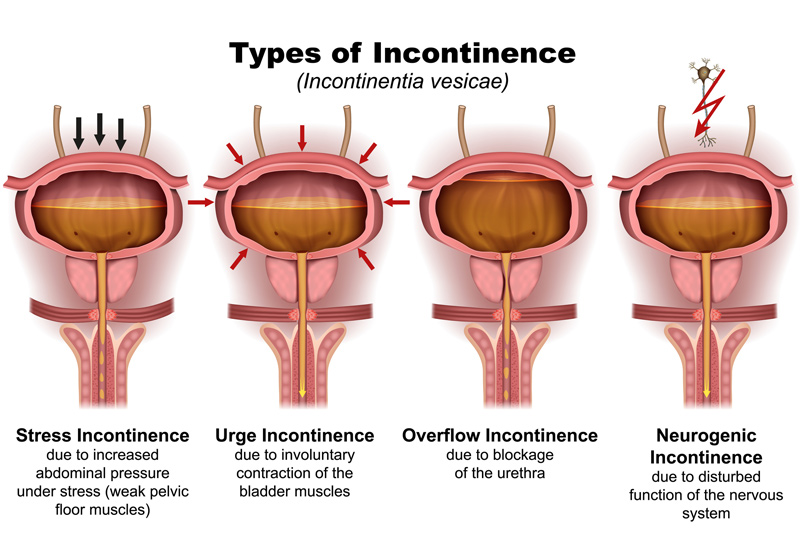

The synthetic sling and autologous fascial slings are currently of the most frequently practiced urinary incontinence treatment option for female patients diagnosed with stress urinary incontinence (SUI).
What is Stress Urinary Incontinence?
SUI occurs when sudden pressure on the bladder and urethra causes the sphincter muscles to open briefly and leak urine. In mild SUI, pressure from sudden activities like sneezing, laughing, or coughing may cause incontinence. Patients with severe SUI may experience incontinence after standing up, walking, or bending over. Incontinence can range from a few drops of urine to enough urine to soak clothing.
SUI is more common in women than men. Patients diagnosed with SUI may also have overactive bladder. Patients that have both forms of incontinence suffer from mixed incontinence.

Sling Surgery for Women with SUI
The most common surgical option for women diagnosed with SUI is “sling” surgery. This involves placing a small strip of material (a sling) under the patient’s urethra to prevent it from moving downward during activities. The sling acts as a hammock to support the urethra.
Over the years, many sling techniques and materials have been developed to increase treatment effectiveness and improve outcomes. Slings can be made from the patient’s own tissue, donor tissue, or surgical mesh.
The primary sling surgeries used to treat SUI include midurethral sling and autologous sling.
Midurethral synthetic Sling. The midurethral sling is the most common type of surgery used to treat SUI. The sling is made out of a narrow strip of synthetic mesh that is placed under the urethra. The surgeon may use a variety of techniques to place the sling: retropubic, transobturator, and single-incision. Prior to surgery, the physician will make anchoring recommendations according to the patient’s overall health and discuss the risks.
If the sling is made from surgical mesh, the surgeon may only need to make a small incision in the vagina. The sling will then be inserted under the urethra and attached to the surrounding pelvic floor tissue. This surgery is short and the recovery process may be shorter than surgery with an autologous sling.
Autologous Fascia Sling. The sling used in this type of surgery is made from a strip of the patient’s own tissue (autologous) taken from the lower abdomen or thigh. The surgeon stitches the ends of the sling in place through an abdominal incision.
To make the sling from the patient’s body tissue, the surgeon will make an additional incision in the lower abdomen or thigh to collect tissue. A specialist may be needed to do this, since it’s not as common as other types of sling surgery.
Autologous sling surgery is usually done through an incision in the bikini line. Or it can be done through an incision over the thigh. Surgery may take up to two hours, requiring more time to recover than a mid-urethral sling surgery.
Patients should speak to their physician to find out which sling surgery is the best option for them.
